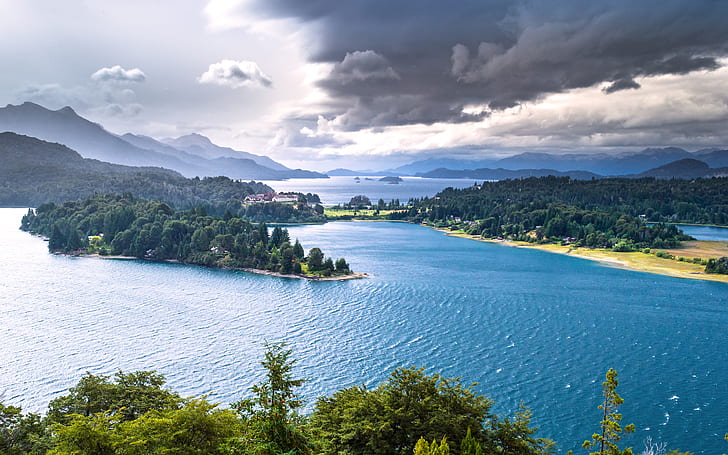The magazine reviewed the natural enclaves in the south of the country that invite you to venture out on expeditions and tours. According to the publication, this region is a “chest full of places that take your breath away” due to its beauty.
Argentine Patagonia is located in the southernmost part of South America, and is recognized worldwide for its rugged nature, sublime landscapes and extreme weather conditions that invite you to adventure.This region covers a vast territory of steppes, glaciers, mountains and forests, and is famous for natural attractions such as the Perito Moreno glacier, the Andes mountain range and Los Glaciares National Park, among others, which offer spectacular settings for lovers of nature. trekking, climbing and nature observation.
In that sense, National Geographic magazine reviewed the 13 Patagonian destinations with the most spectacular landscapes. “Buenos Aires is so far away that it seems to have never existed. The traveler who enters the landscapes of Patagonia loses his urban memory and feels that he is part of an amazing planet. The south of Argentina is a chest full of natural landscapes that take your breath away,” they introduced in the list. The first five places are:
1-Fitz Roy hill: This hill, with a height of 3,405 meters, represents one of the most untamed and wild peaks in the Andes. From the town of El Chaltén you can undertake journeys that approach this natural wonder of South America, as well as routes to climb to the top.
2-Villa La Angostura: In this town in the province of Neuquén, National Geographic highlighted the Santa Ana waterfall, “which jumps 50 meters between basaltic rocks and ferns. “It is one of the greatest attractions of this city located 70 kilometers from Bariloche, in Río Negro.”
3-Perito Moreno glacier: This glacier is, for National Geographic, “the most famous in Patagonia.” Because? This is how they described it: “With a front 5 kilometers long and about 60 meters high, this glacier dumps its ice into the southern arm of Lake Argentino.”
4-Ranch expeditions: “Patagonia is full of livestock ranches, called ranches, which in recent years have been transformed into comfortable rural accommodations. Located in enclaves of great beauty, in the middle of meadows with the Andes as a backdrop and far from towns, they offer much more than sleeping under the Patagonian sky,” they noted in the survey. And they added: “The routes on horseback, on foot and in an all-terrain vehicle allow you to explore the surroundings, reach lakes, contemplate rivers flowing down from the mountains and even visit rock shelters. It is also exciting to witness day-to-day activities on livestock farms, such as shearing, herding and dressage. The gastronomic section constitutes the other great asset of the Patagonian haciendas. From their stoves come gastronomic delights based on top quality meat, which are accompanied by wines from the region. Sharing the traditional mate infusion is a gesture of courtesy between hosts and visitors.”
5-San Carlos de Bariloche: This town in the province of Río Negro is one of the access routes to the Nahuel Huapi National Park, located in the lakes region. “It is usually the first stop on any trip to Patagonia. Located on the southern shore of Lake Nahuel Huapi, the city has long been considered one of the most famous mountain destinations – in summer and winter – in the country for Argentines themselves and for visitors from the rest of the world,” they said from National Geographic. .“Outside Argentina, the name Bariloche is quickly associated with skiing and lakes of impressive beauty. Observing them from the top of a mountain is the best prologue to begin to understand Patagonia. One of those that offers easier access is Cerro Campanario (1,050 meters), a 30-minute walk from the center of San Carlos and also connected to a chairlift,” they postulated.
It was also mentioned: Puerto Pirámides, sea lion watching, hikes in Santa Cruz lagoons, right whale watching, Peninsula Valdés, cave of the hands, patagonian penguin sighting and ice trails.
Article taken from Infobae


